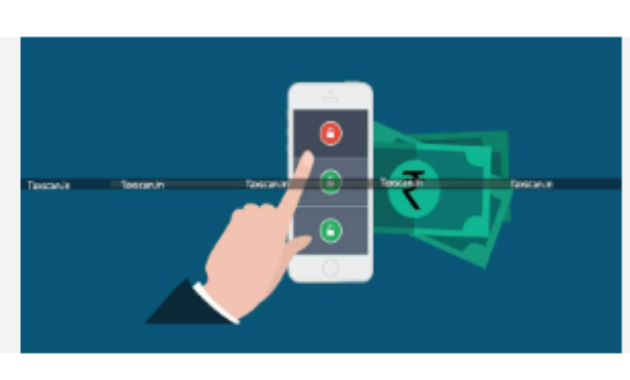In today’s digital age, managing personal and business finances has never been easier thanks to a plethora of financial management applications. These apps, commonly referred to as “money management apps” or “financial apps,” offer a range of features designed to simplify budgeting, track expenses, manage investments, and even handle transactions. This article explores the various types of money management applications, their key features, and how to choose the right app to suit your financial needs.
Table of Contents
What Are Money Management Apps?
Money management apps are digital tools that help users keep track of their financial activities. These apps can cater to various needs, including budgeting, expense tracking, investment management, and bill payment. By consolidating financial information into a single platform, these apps provide valuable insights and facilitate better financial decision-making.
Types of Money Management Apps
1. Budgeting Apps
Description: Budgeting apps help users create and manage their budgets by tracking income and expenses. They assist in setting financial goals and monitoring spending patterns.
Key Features:
- Expense Tracking: Categorize and monitor daily expenditures.
- Budget Creation: Set up and manage monthly or yearly budgets.
- Goal Setting: Establish savings or financial goals and track progress.
Popular Examples:
- Mint: Offers comprehensive budgeting tools, expense tracking, and financial goal-setting features.
- You Need a Budget (YNAB): Focuses on proactive budgeting and providing strategies for managing money more effectively.
2. Expense Tracking Apps
Description: Expense tracking apps focus on recording and categorizing individual expenses to provide insights into spending habits.
Key Features:
- Expense Categorization: Automatically categorize transactions or allow manual entry.
- Receipts Scanning: Capture and store receipts using the app’s camera function.
- Spending Reports: Generate reports and summaries to analyze spending patterns.
Popular Examples:
- Expensify: Ideal for tracking expenses, scanning receipts, and generating expense reports.
- PocketGuard: Simplifies expense tracking by showing how much disposable income is available after accounting for bills and savings goals.
3. Investment Apps
Description: Investment apps assist users in managing their investment portfolios, tracking performance, and making informed investment decisions.
Key Features:
- Portfolio Tracking: Monitor and analyze the performance of investments.
- Trading: Buy and sell stocks, bonds, or other securities directly from the app.
- Investment Insights: Provide market analysis and investment recommendations.
Popular Examples:
- Robinhood: Offers commission-free trading and portfolio management tools.
- Acorns: Automates investing by rounding up purchases and investing spare change into diversified portfolios.
4. Bill Payment Apps
Description: Bill payment apps simplify the process of paying bills by offering tools to schedule, manage, and track payments.
Key Features:
- Bill Reminders: Receive notifications for upcoming bills and due dates.
- Automated Payments: Set up recurring payments to avoid late fees.
- Payment Tracking: Monitor payment history and status.
Popular Examples:
- Prism: Consolidates bills and payments into a single app and offers reminders and payment tracking.
- Bill.com: Focuses on automating accounts payable and receivable processes for businesses.
5. Savings Apps
Description: Savings apps help users save money by automating savings, offering savings goals, and providing tips on how to save more efficiently.
Key Features:
- Automatic Savings: Transfer funds to savings accounts or investment accounts automatically.
- Savings Goals: Set and track progress towards specific savings objectives.
- Cashback and Rewards: Earn cashback or rewards for saving money or making purchases.
Popular Examples:
- Digit: Automatically saves small amounts of money based on spending patterns.
- Qapital: Uses behavioral psychology to encourage saving by rounding up purchases and saving the difference.
6. Personal Finance Apps
Description: Personal finance apps offer a comprehensive approach to managing all aspects of personal finance, including budgeting, expense tracking, investments, and financial planning.
Key Features:
- Comprehensive Overview: Integrate various financial activities into a single platform.
- Financial Planning: Provide tools for retirement planning, debt reduction, and investment strategy.
- Synchronization: Connect with bank accounts, credit cards, and other financial institutions.
Popular Examples:
- Personal Capital: Combines budgeting, expense tracking, and investment management with a focus on retirement planning.
- GoodBudget: Uses the envelope budgeting system to manage cash flow and savings.
Benefits of Using Money Management Apps
1. Enhanced Financial Awareness
Description: Money management apps provide a clear picture of your financial situation by tracking income, expenses, and investments, helping you make informed decisions.
Benefits:
- Real-Time Tracking: Monitor financial transactions as they occur.
- Comprehensive Reports: Access detailed reports and summaries to understand spending habits and financial health.
2. Improved Budgeting
Description: By setting and monitoring budgets, you can control spending and save money more effectively.
Benefits:
- Goal Setting: Establish and track financial goals, such as saving for a vacation or paying off debt.
- Expense Monitoring: Identify areas where you can cut back and adjust budgets accordingly.
3. Time Savings
Description: Automating financial tasks, such as bill payments and savings transfers, saves time and reduces the risk of missing deadlines.
Benefits:
- Automated Payments: Set up recurring payments to avoid late fees and streamline financial management.
- Automatic Savings: Regularly save without having to manually transfer funds.
4. Financial Planning and Insights
Description: Many apps offer tools for financial planning and provide insights into investment opportunities and market trends.
Benefits:
- Investment Management: Track and manage investment portfolios with ease.
- Planning Tools: Access retirement calculators, debt reduction plans, and other financial planning resources.
5. Enhanced Security
Description: Modern money management apps incorporate advanced security features to protect sensitive financial information.
Benefits:
- Encryption: Use encryption to secure financial data and transactions.
- Two-Factor Authentication: Add an extra layer of security with two-factor authentication for accessing accounts.
Choosing the Right Money Management App
1. Identify Your Needs
Description: Determine what financial tasks you need help with, whether it’s budgeting, expense tracking, investments, or bill payments.
Considerations:
- Budgeting Needs: Look for apps with strong budgeting features if managing expenses is a priority.
- Investment Focus: Choose apps with comprehensive investment tools if managing a portfolio is important.
2. Evaluate Features
Description: Compare the features offered by different apps to find one that meets your requirements.
Considerations:
- User Interface: Select an app with an intuitive and user-friendly interface.
- Integration: Ensure the app integrates with your bank accounts, credit cards, and other financial institutions.
3. Check Reviews and Ratings
Description: Research user reviews and ratings to gauge the app’s reliability, performance, and customer support.
Considerations:
- User Feedback: Read reviews to understand user experiences and potential issues.
- Expert Opinions: Look for recommendations from financial experts or trusted sources.
4. Consider Costs
Description: Some money management apps are free, while others require a subscription or one-time payment.
Considerations:
- Pricing Structure: Review the app’s pricing model and determine if it fits within your budget.
- Value for Money: Assess whether the app’s features justify the cost.
5. Test the App
Description: Many apps offer free trials or basic versions, allowing you to test their functionality before committing.
Considerations:
- Trial Period: Use the free trial to explore the app’s features and determine if it meets your needs.
- Ease of Use: Evaluate how easy it is to navigate and use the app during the trial period.
Conclusion
Money management apps are powerful tools for simplifying financial management and achieving your financial goals. By offering features such as budgeting, expense tracking, investment management, and bill payment, these apps provide valuable insights and streamline financial tasks. Whether you’re looking to manage personal finances or run a business, selecting the right money management app can enhance your financial awareness, improve budgeting, and save time. By understanding your needs, evaluating features, and testing options, you can choose an app that best fits your financial situation and supports your path to financial success.
Integrating Money Management Apps into Your Financial Routine
Incorporating money management apps into your daily financial routine can significantly enhance your ability to manage and optimize your finances. Here are some practical tips for seamlessly integrating these tools into your financial practices:
1. Set Up and Customize Your App
Description: Properly setting up and customizing your money management app ensures it aligns with your financial goals and preferences.
Steps:
- Account Linking: Connect your bank accounts, credit cards, and other financial institutions to the app for real-time tracking.
- Budget Creation: Input your income and expenses to create a personalized budget that reflects your financial goals.
- Categorization: Customize categories for expenses and income to match your spending patterns and financial objectives.
2. Regular Monitoring and Review
Description: Consistent monitoring and reviewing of your financial activities help you stay on top of your financial health and make necessary adjustments.
Steps:
- Daily or Weekly Check-Ins: Set aside time each day or week to review transactions, check budget adherence, and monitor account balances.
- Review Reports: Regularly analyze reports and insights provided by the app to understand your spending habits and financial trends.
- Adjust Budgets and Goals: Modify your budget and financial goals as needed based on your review and changing circumstances.
3. Utilize Alerts and Notifications
Description: Alerts and notifications can help you stay informed about important financial events and take timely actions.
Steps:
- Bill Reminders: Enable notifications for upcoming bills and payment due dates to avoid late fees.
- Budget Alerts: Set alerts for overspending or approaching budget limits to keep your spending in check.
- Savings and Investment Notifications: Receive updates on savings progress and investment opportunities or changes.
4. Incorporate App Features into Daily Activities
Description: Make the most of the app’s features by incorporating them into your daily financial activities.
Steps:
- Track Expenses on the Go: Use your app to capture and categorize expenses as they occur, especially when using receipt scanning features.
- Automate Savings and Payments: Set up automatic transfers to savings accounts or scheduled bill payments to streamline financial management.
- Use Financial Insights for Planning: Leverage the app’s insights and recommendations to inform financial decisions and long-term planning.
5. Ensure Data Security
Description: Protecting your financial data is crucial to prevent unauthorized access and fraud.
Steps:
- Enable Security Features: Use two-factor authentication and strong passwords to secure your app account.
- Monitor Account Activity: Regularly review account activity for any suspicious transactions or anomalies.
- Update App and Security Settings: Keep the app updated to benefit from the latest security features and improvements.
6. Educate Yourself and Seek Support
Description: Enhance your financial knowledge and seek support if needed to make the most of your money management app.
Steps:
- Explore Educational Resources: Many apps offer tutorials, articles, and tips to help you understand and use their features effectively.
- Contact Support: Reach out to customer support if you encounter issues or need assistance with app functionalities.
- Join User Communities: Engage with online communities or forums where users share experiences and tips about the app.
Common Challenges and Solutions
While money management apps offer numerous benefits, users may encounter some challenges. Here’s how to address common issues:
1. Data Syncing Issues
Challenge: Inconsistent or failed syncing between the app and your bank accounts can lead to incomplete or inaccurate financial information.
Solution:
- Check Connectivity: Ensure that your app has a stable internet connection and access to your bank’s API.
- Re-link Accounts: Reconnect your bank accounts within the app to refresh the connection.
- Contact Support: Reach out to the app’s customer service for assistance with persistent syncing issues.
2. Overwhelming Features
Challenge: Some users may find the multitude of features offered by money management apps overwhelming.
Solution:
- Start Simple: Focus on the core features that address your primary financial needs and gradually explore additional functionalities.
- Customize Settings: Tailor the app’s settings and features to align with your specific financial goals and preferences.
- Use Tutorials: Utilize the app’s tutorials and help resources to familiarize yourself with its features.
3. Privacy Concerns
Challenge: Concerns about data privacy and security can arise when using financial apps that handle sensitive information.
Solution:
- Review Privacy Policies: Read the app’s privacy policy to understand how your data is handled and protected.
- Enable Security Features: Use strong passwords, enable two-factor authentication, and monitor your account for unauthorized access.
- Use Reputable Apps: Choose apps with a good reputation and positive reviews regarding data security.
4. Cost Considerations
Challenge: Some money management apps may come with subscription fees or additional costs that can impact your budget.
Solution:
- Evaluate Value: Assess whether the app’s features and benefits justify the cost compared to free alternatives.
- Explore Free Versions: Many apps offer free versions with basic features that may meet your needs.
- Look for Discounts: Check for promotional offers or discounts that may reduce the cost of premium features.
Conclusion
Money management apps are powerful tools that can transform the way you handle your finances, offering convenience, insights, and control over your financial activities. By choosing the right app, setting it up effectively, and integrating it into your daily routine, you can enhance your financial management practices and achieve your financial goals. While challenges may arise, understanding common issues and implementing solutions can help you maximize the benefits of these digital tools. Whether you’re managing personal finances or business accounts, leveraging the capabilities of money management apps can lead to better financial outcomes and greater peace of mind.




